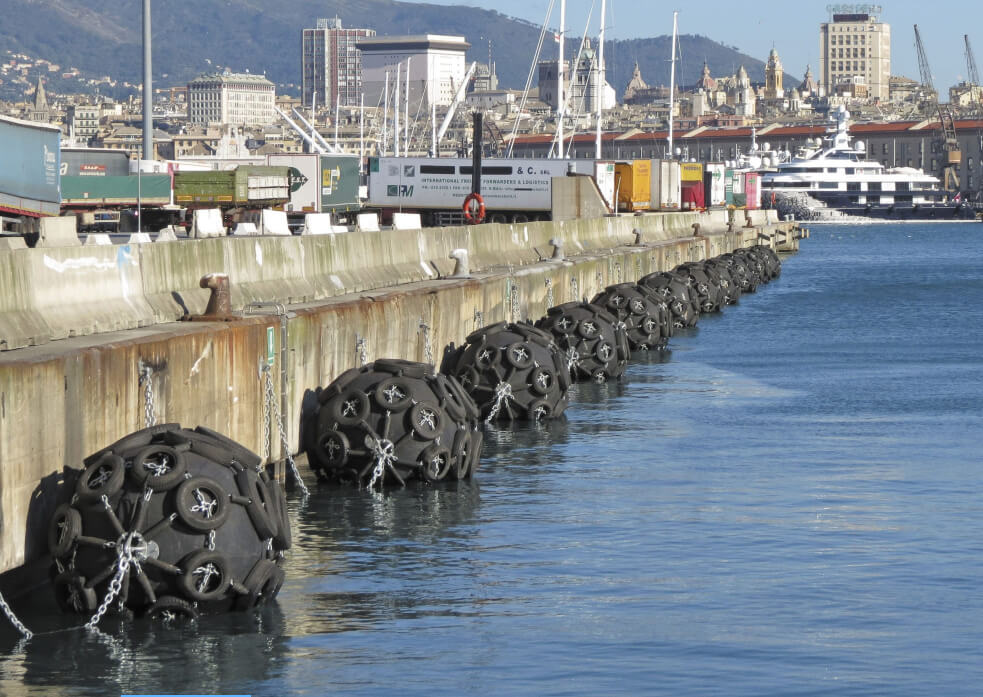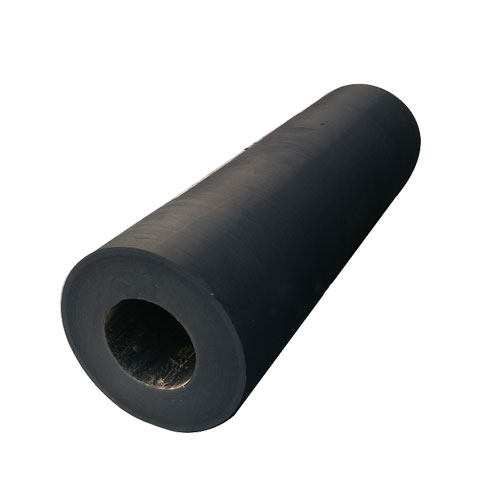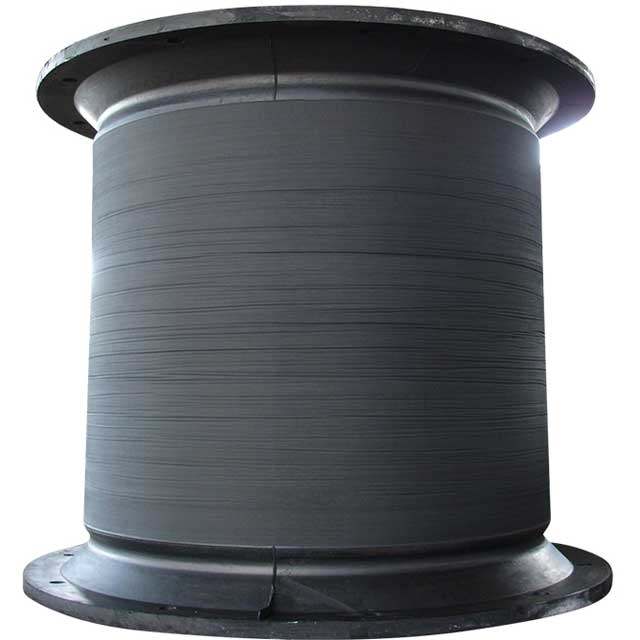
The main aim of installing marine rubber fender is to protect both the vessel and the dock from major failure during the berthing period. External forces, such as abrasion or other natural factors can possibly occur during the berthing process. Therefore, marine rubber fenders are made to solve this problem, and therefore, more money can be saved due to less vessel or dock fixing.
Rubber fenders are designed to absorb the energy that a vessel transfers to a berthing structure, hence the term energy absorption, so that the amount of energy received by the dock is much less compared to when fenders are absent. The force that is bounced back and relieved by the dock through the fender is called reaction force. A good quality marine fender can be determined by measuring the energy absorption and reaction force. A good quality marine fender has a high energy absorption and the low reaction force, hence the reduced impact yielded from the vessel to the dock, as well as the minimized impact bounced back from the dock to vessel.

There are a lot of fender types that can be used on the port, for instance: cylindrical fender, V-type, A-type, M-type, super cell, and super cone fender. Tugboat fenders, however, are installed on tugboats to protect vessels from major failure in the incidence of a crash. In order to achieve the best result, there are several factors that to consider in choosing the right type of marine rubber fender, namely the dimension of berthing vessels, the type of the port, situation around the port and the existence tugboat to guide the vessel while berthing.
1. Vessel dimensions
Vessel dimensions, in terms of type and dead weight tonnage, become significant factors in choosing not only the right fender type, but also the size of the fender. The larger the vessel, the larger the required fenders will be. Usually, fenders which are equipped by frontal frames are chosen as they have large contact area. From the economical perspective, V-type fender can be one of the options. However, to yield the maximum result, super cell and super cone fender are selected. For the ports that are used for the small to medium vessel, the type A, V, M, LMD or cylindrical are chosen to protect the port wall.
2. Type of the port
Another significant factor that can influence in choosing the right type of fender is the type of the port. Based on the location and position of the port, there are several port structures that are usually used including dolphin, monopile, jetty and quay wall. In the dolphin terminal, the terminal consists of poles that are used for vessels to berth. Rubber fender that is usually used in this terminal is super cell fender. However, jetty terminal, which is also known as floating terminal, does not need a really tough construction as it floats. This terminal is used for passenger ships. Unlike other kinds of ports, terminals with quay wall consists of concrete structure which parallels the beach. Large vessels cannot berth on this terminal due to the shallow waters in which the terminals are usually located.

3. Marine environment
The marine environment, such as high and low tides of the seawater, the power of wind which influences the waves, is another factor that needs to be considered in choosing the right fender type and dimension. If there is a big difference between the high and low tides, elongated fenders must be chosen, especially when the port is used by diversely sized vessels. If a small vessel needs to berth during the low tide, it can still berth to this port. Therefore, it is recommended to have the fenders installed in vertical position. On the other hand, when the sea is windy and wavy, the water also gets rough. This causes vessels to bump into the port wall. Elongated V type fender, super cell or super cone fender equipped by frontal frames can be used for this type of port.

4. The availability of guidance during berthing process
The availability of tugboats during berthing process is very important in order to avoid vessels from crashing into the port wall. This is because the speed of the vessel and the berthing angle can be adjusted as the vessel moves closer to the port.